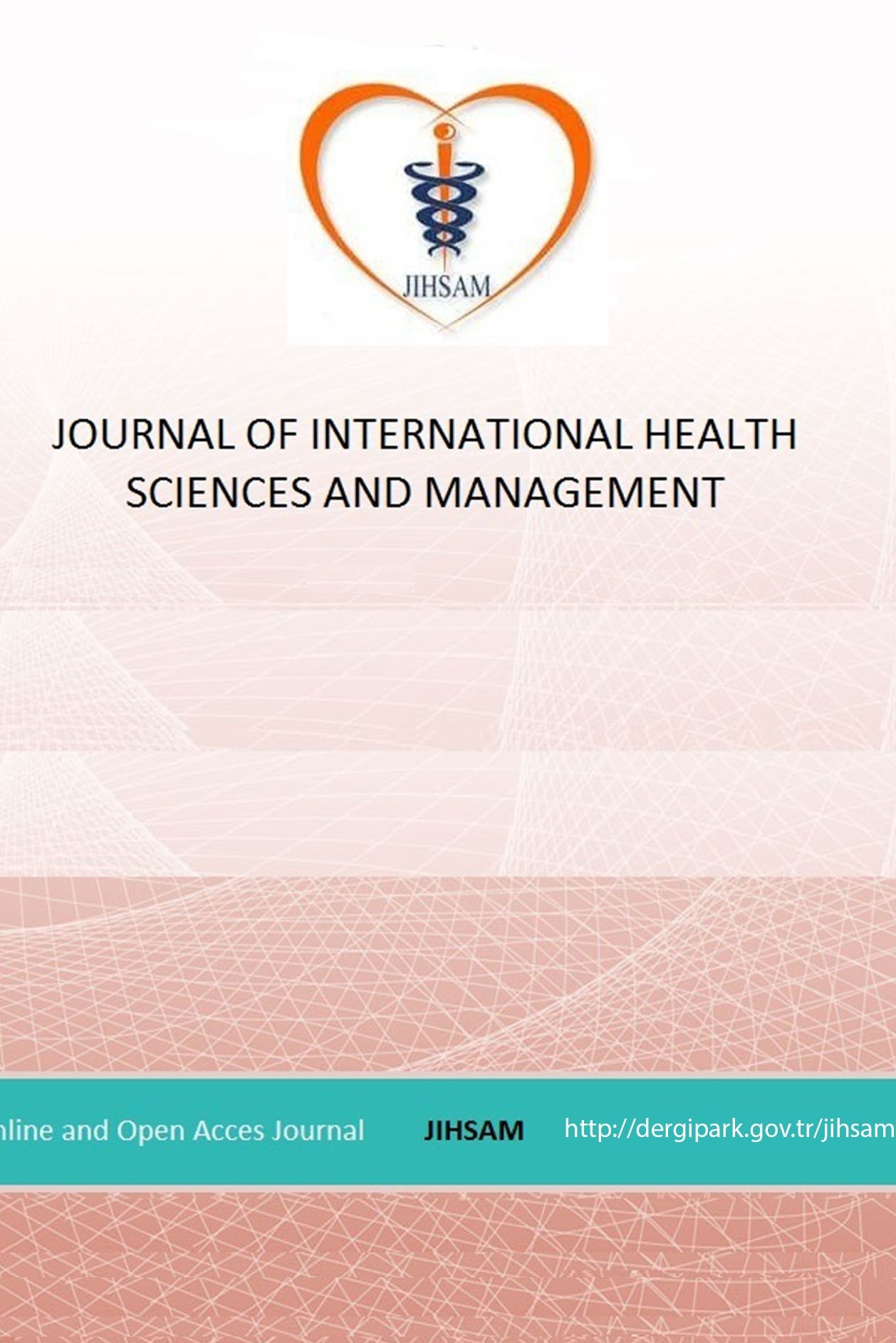DETERMINING THE KNOWLEDGE LEVELS OF THE MIDWIVES AND NURSES WORKING IN THE HOSPITALS ABOUT HEPATITIS A AND B AND THE PRECAUTIONS THEY TAKE
DETERMINING THE KNOWLEDGE LEVELS OF THE MIDWIVES AND NURSES WORKING IN THE HOSPITALS ABOUT HEPATITIS A AND B AND THE PRECAUTIONS THEY TAKE
The healthcare professionals working in the health field of hepatitis-B virus (HBV) and hepatitis-A virus (HAV) which are still an important infectious disease in the world and in Turkey are at risk in terms of many infectious diseases that may be infected from the patients and the physical environment in the work environment. HBV and HAV infection and their outcomes are among the important public health issues. This study was conducted to determine the knowledge levels of the nurses and midwives, working in the institutions with beds in city center of Şanlıurfa, about HBV and HCV infections and the precautions they take. This descriptive study included the nurses and midwives working in Harran University Research and Application Hospital (285 Nurses/midwives) and in 4 hospitals (823 Nurses/midwives) affiliated with Şanlıurfa Public Hospitals Institutions in city of Şanlıurfa. While the population of the study consisted of 1.108 midwives/nurses/health officers working and being on duty in these hospitals, the sample consisted of 550 people who could be reached and were voluntary to fill out the questionnaire. A questionnaire was prepared by reviewing the related literature and receiving the expert opinions and the questionnaire form was put in the final form after the preliminary study was performed. In this form, there are 36 questions including the socio-demographic characteristics of the nurses and the precautions taken by the institutions and the nurses in order to be protected from the HBV and HAV. Before starting the study, the required permissions were taken from the institutions and participants and the questionnaire was applied using the face-to-face interview technique by the researchers between January 2nd and May 31st 2016. The statistical evaluation of the data obtained in the study was performed by using SPSS (22) packaged software as well as number, percentage, mean, and standard deviation values.
___
- Altıok, M., Kuyurtar, F., Karaçorlu, S., Ersöz, G. ve Erdoğan, S. (2009). Sağlık çalışanlarının delici kesici aletlerle yaralanma deneyimleri ve yaralanmaya yönelik alınan önlemler. Maltepe Üniversitesi Hemşirelik Bilim ve Sanatı Dergisi, 2(3), 70-9.Çalışkan, D. & Akdur, R. (2001). Ankara Üniversitesi Tıp Fakültesi Hastanesinde çalışan hemşirelerin kendi bildirimleri ile karşilaştiklari mesleki riskler. Ankara Üniversitesi Tıp Fakültesi Mecmuası, 54(2).Erkan, S. (2014). Pamukkale Üniversite Hastanesi’nde çalışan hemşire ve teknisyenlerin mesleki risk algisinin belirlenmesi. Yüksek Lisans Tezi, Pamukkale Üniversitesi Sağlık Bilimleri Enstitüsü, Denizli.Göçgeldi, E., İstanbulluoğlu, H., Türker, T., Güleç, M., Ceylan, S., Koçak, N. & Komutanlığı, T.S. (2011). Tıp fakültesi öğrencilerinin mesleki maruziyetten kaynaklanan sağlık riskleri konusundaki bilgi düzeylerinin karşılaştırılması. Gülhane Tıp Dergisi, 53(3), 195-204.Keane, F.E., Neale, J., Phillips, T., Heard, L., Jones, R., Guttridge, B. & Bendall, R. (2002). Offering routine antenatal testing for HIV and hepatitis B in the rural setting of Cornwall. Sex Transm Infect, 78(2), 133.Kuruüzüm, Z., Elmalı, Z., Günay, S., Gündüz, Ş. & Yapan, Z. (2008). Sağlık çalışanlarında kan ve beden sıvılarıyla oluşan mesleksel yaralanmalar: Bir anket çalışması. Mikrobiyoloji Bülteni, 42(1), 61-9. Lai, C.L., Ratziu, V., Yuen, M.F. & Poynard, T. (2003). Viral hepatitis B. Lancet, 362, 2089-2094. Lavanchy, D. (2004). Hepatitis B virus epidemiology, disease burden, treatment, and current and emerging prevention and control measure. Journal of Viral Hepatitis, 11(2), 97-107.Sagmeister, M., Renner, E.L., Mullhaupt, B. et. al. (2002). Simulation of hepatitis C and based on mandatory reporting system. European Journal of Gastroenterelogy & Hepatology, 14, 25-34.Şahin, N.H., Bilgiç, D., Esen, Ü., Çetinkaya, R. & Tozoğlu, Z. (2009). Bayan kuaförü çalişanlarinin hepatit B'ye ilişkin bilgi ve uygulamalarinin belirlenmesi. TAF Preventive Medicine Bulletin, 8(2).Sarı, N.D., Fincancı, M., Soysal, H.F., Demirkıran, N., Koyuncu, S. & Özgün, Ö. (2014). Delici kesici alet yaralanmalarinin bildirim sikliği neyin göstergesi. Haseki Tıp Bülteni, 52, 98-102.Sharma, S.K., Saini, N. & Chwla, Y. (2005). Hepatitis B Virus: Inactive carriers. Virol Journal, (82), 1-5. Smyth, C.M., Manning, D.S., Byrn,e M.F. et. al. (2002). Hepatitis C infection in plasmapheresis donors: An overlooked risk factor for transmission? European Journal of Gastroenterelogy & Hepatology 14, 891-892.Tosun, S. (2013). Viral hepatitlerin ülkemizdeki değişen epidemiyolojisi. ANKEM Dergisi, 27(2), 128-134.Uçan, Ö., Ovayolu, N. & Torun, S. (2006). Hemşirelerin hepatit B ve C virüslerinden korunmak için aldıkları önlemlerin belirlenmesi. Journal of Anatolia Nursing and Health Sciences, 9(2), 11-20. Weisbord, J.S., Koumans, E.H., Toomey, K.E., Grayson, C., Markowitz, L.E. (2001). Sexually transmitted diseases during pregnancy: Screening, diagnostic, and treatment practices among prenatal care providers in Georgia. South Medicine Journal, 94(1), 47-53.Yoldaş, Ö., Bulut, A., Ertürk, E., Çelik, D., Karakaşoğlu, Ü. & Altındiş, M. (2014). Sağlık çalışanlarında enfekte kan ve vücut sivilarina maruziyet riskinin belirlenmesi. Kocatepe Tıp Dergisi, 15(3).
- Yayın Aralığı: Yılda 2 Sayı
- Başlangıç: 2015
- Yayıncı: Sedat BOSTAN
